Description
Get your degree with ease by using our files. We do not keep any logs and we do not log any information. What does this mean for you? This means, your order is completely anonymous and confidential. Part of our service allows you to purchase these files without anyone else knowing. There is no risk and you have nothing to lose. If you are using this very text book in school right now, then you will need this nursing test bank to learn important core knowledge so you can be the ultimate nurse. Add this product to your cart and checkout to receive the download for your nursing test bank for Fundamentals Nursing Active Learning 1st Edition Yoost Crawford Test Bank
Do you have any questions? Would you like a sample sent to you? Just send us an email at inquiry@testbankcorp.com (no spaces). We will respond as soon as possible.
== SAMPLE ==
Chapter 02: Values, Beliefs, and Caring
MULTIPLE CHOICE
1. Enduring ideas about what a person considers is desirable or has worth in life is known as a:
a. value.
b. first-order belief
c. higher order belief
d. stereotype
ANS: A
Values are enduring ideas about what a person considers is the good, the best, and the “right” thing to do and their opposites—the bad, worst, and wrong things to do—and about what is desirable or has worth in life. First-order beliefs serve as the foundation or the basis of an individual’s belief system. Higher-order beliefs are ideas derived from a person’s first-order beliefs, inductive, or syllogistic reasoning. A stereotype is a belief about a person, a group, or an event that is thought to be typical of all others in that category.
DIF: Remembering REF: pp. 22-23 OBJ: 2.1
TOP: Assessment
MSC: NCLEX Client Needs Category: Safe and Effective Care Environment: Management of Care
NOT: Concepts: Professionalism
2. A group of students are discussing the history of nursing. A student states, “Yea, nurses used to be called the doctor’s handmaiden.” This type of comment is known as a:
a. prejudice.
b. generalization.
c. stereotype.
d. belief.
ANS: C
A stereotype is a belief about a person, a group, or an event that is thought to be typical of all others in that category. A prejudice is a preformed opinion, usually an unfavorable one, about an entire group of people that is based on insufficient knowledge, irrational feelings, or inaccurate stereotypes. In the process of learning, people form generalizations (general statements or ideas about people or things) to relate new information to what is already known and to categorize the new information, making it easier to remember or understand. A belief is a mental representation of reality or a person’s perceptions about what is right (correct), true, or real, or what the person expects to happen in a given situation.
DIF: Understanding REF: pp. 22-23 OBJ: 2.2
TOP: Evaluation
MSC: NCLEX Client Needs Category: Safe and Effective Care Environment: Management of Care
NOT: Concepts: Professionalism
3. A values system is a set of somewhat consistent values and measures that are organized hierarchically into a belief system on a continuum of relative importance. A value system is also:
a. culturally based.
b. unique to each individual.
c. a poor basis for making decisions.
d. rigid and uniform within a culture.
ANS: A
Anthropologists and social scientists have noted that in every culture, a particular value system prevails and consists of culturally defined moral and ethical principles and rules that are learned in childhood. Each individual possesses a relatively small number of values and may share the same values with others, but to different degrees. A value system helps the person choose between alternatives, resolve values conflicts, and make decisions. Within every culture, however, values vary widely among subcultural groups and even between individuals on the basis of the person’s gender, personal experiences, personality, education, and many other variables.
DIF: Remembering REF: pp. 23-24 OBJ: 2.1
TOP: Assessment MSC: NCLEX Client Needs Category: Psychosocial Integrity
NOT: Concepts: Professionalism
4. The nurse is caring for a patient who is under arrest for murder. She is attempting to perform her duties while, at the same time, feeling a sense of repugnance toward the patient. The nurse is undergoing:
a. value clarification
b. value conflict
c. first-order beliefs
d. higher-order beliefs
ANS: B
A values conflict occurs when a person’s values are inconsistent with his or her behaviors or when the person’s values are not consistent with the choices that are available. Providing care for a convicted murderer may elicit troubling feelings for a nurse, resulting in a values conflict between the nurse’s commitment to care for all people and a personal repugnance for the act of murder. First-order beliefs serve as the foundation or the basis of an individual’s belief system. Higher-order beliefs are ideas derived from a person’s first-order beliefs, inductive, or syllogistic reasoning.
DIF: Understanding REF: pp. 22-24 OBJ: 2.2
TOP: Diagnosis MSC: NCLEX Client Needs Category: Psychosocial Integrity
NOT: Concepts: Professionalism
5. While helping patients with values clarification and care decisions, nurses should:
a. convince the patient to do what the nurse believes is best.
b. give advice about what the nurse would do.
c. tell the patient what the right thing to do is.
d. provide information so that the patient can make informed decisions.
ANS: D
While helping patients with values clarification and care decisions, nurses must be aware of the potential influence of their professional nursing role on patient decision making. Nurses should be careful to assist patients to clarify their own values in reaching informed decisions. Providing information to patients so that they can make informed decisions is a critical nursing role. Giving advice or telling patients what to do in difficult circumstances is both unethical and ill-advised.
DIF: Applying REF: p. 25 OBJ: 2.2 TOP: Implementation
MSC: NCLEX Client Needs Category: Psychosocial Integrity NOT: Concepts: Professionalism
6. A patient with terminal cancer says to the nurse, “I just don’t know if I should allow CPR in the event I quit breathing. What do you think?” Which statement by the nurse would be most beneficial to the patient?
a. “If it were me, I would want to live no matter what.”
b. “Don’t worry. You have plenty of time to decide that later on.”
c. “It’s totally up to you. Have you discussed this with your family?”
d. “Let’s talk about what CPR means to you.”
ANS: D
The use of the value clarification process is helpful when assisting patients in making health care decisions regarding end-of-life care. Giving advice or telling patients what to do is unethical and not recommended. Ignoring a patient concern or changing the subject is inappropriate. Patients should be given factual information in order for them to make their own decisions.
DIF: Applying REF: pp. 24-25 OBJ: 2.3 TOP: Implementation
MSC: NCLEX Client Needs Category: Psychosocial Integrity NOT: Concepts: Professionalism
7. The nurse is observed sitting at the bedside of a patient discussing the nursing care plan for the shift. Which theory or model most accurately reflects this nurse–patient relationship?
a. Swanson’s Theory of Caring
b. Travelbee’s Human-to-Human Relationship Model
c. Watson’s Theory of Caring
d. Leininger Cultural Care Theory
ANS: A
Swanson’s five caring processes include being with and enabling. Sitting at the bedside and sharing information are activities that exemplify these behaviors. Travelbee’s model describes steps toward compassionate and empathetic care. Watson’s theory of caring impacts both the person and the universe and is built upon 10 carative factors. Leininger describes patient care and its relationship to cultural diversity.
DIF: Understanding REF: pp. 27-28 OBJ: 2.5
TOP: Diagnosis MSC: NCLEX Client Needs Category: Psychosocial Integrity
NOT: Concepts: Professionalism
8. The student nurse is planning care for a patient who believes that Western medicine is effective but not always accurate. Nursing theory would best explain the patient’s health practices?
a. Nursing: Human Science and Human Care
b. Cultural Care Theory
c. Human-to-Human Relationship Model
d. Five Caring Processes
ANS: B
Leininger describes patient care and its relationship to cultural diversity. Swanson’s five caring processes include maintaining belief, knowing, being with, doing for, and enabling. Travelbee’s Human-to-Human Relationship Model describes steps toward compassionate and empathetic care. Watson’s theory of Human Science and Human Care impacts both the person and the universe and is built upon 10 carative factors.
DIF: Understanding REF: pp. 27-28 OBJ: 2.5
TOP: Diagnosis MSC: NCLEX Client Needs Category: Psychosocial Integrity
NOT: Concepts: Professionalism
9. Which nursing theorist describes the nurse–patient relationship as interpersonal with a focus on compassion and empathy?
a. Kristen Swanson
b. Jean Watson
c. Madeleine Leininger
d. Joyce Travelbee
ANS: D
Travelbee’s Human-to-Human Relationship Model describes steps toward compassionate and empathetic care. Leininger describes patient care and its relationship to cultural diversity. Swanson’s five caring processes include maintaining belief, knowing, being with, doing for, and enabling. Watson’s theory of Human Science and Human Care impacts both the person and the universe and is built upon 10 carative factors.
DIF: Remembering REF: pp. 27-28 OBJ: 2.5
TOP: Assessment MSC: NCLEX Client Needs Category: Psychosocial Integrity
NOT: Concepts: Professionalism
10. The nurse on a busy medical–surgical floor contacts a social worker requesting a home care referral prior to a patient’s discharge. This action is best illustrated by which of Swanson’s Five Caring Processes?
a. Enabling
b. Knowing
c. Doing For
d. Being with
e. Maintaining Belief
ANS: A
Advocating for a patient’s post-hospitalization care is an enabling process. Enabling also includes informing, anticipating, and preparing for the future. Swanson’s Five Caring Processes also include maintaining belief, knowing, being with, and doing for.
DIF: Remembering REF: p. 28 OBJ: 2.5
TOP: Assessment MSC: NCLEX Client Needs Category: Psychosocial Integrity
NOT: Concepts: Professionalism
11. Which action observed by a nurse manager may be indicative of codependency behavior?
a. A staff nurse orders extra desserts for a patient diagnosed with morbid obesity.
b. A medication nurse administers scheduled pain medication to patients as ordered.
c. A respiratory therapist teaches a patient’s wife how to adjust an oxygen mask.
d. A nursing assistant encourages a patient to assist with the morning bath.
ANS: A
Codependency is a dysfunctional relationship in which the person who wants to help acts in a manner that enables harmful behavior by another person. The staff nurse who is providing additional calories and sugar to an extremely overweight patient may be exhibiting codependency behaviors. Many authors, theorists, and professional groups have identified qualities and behaviors that demonstrate caring in nursing practice. Several of the most important concepts include the simple fact of the nurse’s presence, consistency and predictability, the use of touch, and the importance of listening in the nurse–patient relationship. Giving medication to patients as ordered demonstrates the nurse providing consistency and predictability. Teaching how to adjust an oxygen mask and encouraging self-independence demonstrate presence.
DIF: Evaluating REF: p. 29 OBJ: 2.7 TOP: Evaluation
MSC: NCLEX Client Needs Category: Physiological Integrity: Basic Care and Comfort
NOT: Concepts: Caregiving
12. When developing a nursing practice, it is important for the nurse to:
a. be exposed to negative as well as positive role models.
b. avoid negative role models as much as possible.
c. understand that caring and compassion are taught in class.
d. consider another profession if he/she is not naturally compassionate.
ANS: A
Lohri-Posey evaluated how nursing students learned to be caring, The surprising finding was that the negative role models inspired the students to not be like those people and motivated the students just as much as the positive role models. In her study, Lohri-Posey concluded that caring and compassion depended on personal qualities within the individual student, or on experiences that shaped the student’s values, rather than on something that was taught in class.
DIF: Applying REF: pp. 28-29 OBJ: 2.6 TOP: Implementation
MSC: NCLEX Client Needs Category: Safe and Effective Care Environment: Management of Care
NOT: Concepts: Caregiving
13. The nurse is discussing the use of a values clarification tool with a patient. The patient asks, “What is the goal of the values clarification tool?” Which is the best response by the nurse?
a. “The tool will help change your value system so that you can make the right decision.”
b. “The tool will dispel your current beliefs and formulate brand new ones.”
c. “The tool will assist you in prioritizing your value preferences and help you make decisions.”
d. “The tool allows you to make decisions without the need of self-awareness.”
ANS: C
Values clarification is a process used to help people reflect on, clarify, and prioritize personal values to increase self-awareness or to make decisions. Nurses can use values clarification to help patients identify the nature of a conflict and reach a decision based on their values.
DIF: Understanding REF: pp. 24-25 OBJ: 2.3
TOP: Evaluation
MSC: NCLEX Client Needs Category: Safe and Effective Care Environment: Management of Care
NOT: Concepts: Caregiving
14. The nurse is preparing to perform a health history interview with a non-English speaking patient. An interpreter has been assigned to assist in the translation. Which action by the nurse indicates understanding the guidelines for working with an interpreter?
a. Use short sentences and allow time for translation.
b. Ask the interpreter to use third person.
c. Look at the interpreter during the interview.
d. Suggest the use of paraphrasing whenever possible.
ANS: A
The use of short sentences and stopping frequently for the interpretation are effective means of communicating. Additional guidelines for working with an interpreter include speaking to the patient in first person (not the third person), looking at the patient (not the interpreter), translating exactly what the patient says (not paraphrasing), and asking for clarification whenever necessary.
DIF: Understanding REF: p. 27 OBJ: 2.4
TOP: Assessment
MSC: NCLEX Client Needs Category: Safe and Effective Care Environment: Management of Care
NOT: Concepts: Caregiving
15. Patients who enter the health care system have two reasonable expectations. The first is not to be harmed, and the second is that the nurses providing care will be both competent and compassionate. Provision of care that is consistent and delivered in a predictable way can make the experience less intimidating for the patient. The nurse provides predictable care by:
a. Explaining what is going to take place beforehand.
b. Never making promises to patients.
c. Assuring the patient that his/her requests will get done eventually.
d. Protect the patient from knowing why things are happening.
ANS: A
Patients who enter the health care system have two reasonable expectations. The first is not to be harmed, and the second is that the nurses providing care will be both competent and compassionate. Provision of care that is consistent and is delivered in a predictable way can make the experience less intimidating for the patient. The nurse provides predictable care by explaining what is going to take place beforehand or why things are happening, and by following through with the promised care in a timely fashion. Setting up a schedule with the patient and adhering to it can greatly reduce the anxiety the patient experiences and create a supportive environment that provides a sense of security. When nurses are consistent in providing competent care that is delivered on time and matches the patient’s expectations, the patient is reassured that nursing care will be predictable and delivered as prescribed (Bartzak, 2010).
DIF: Applying REF: p. 30 OBJ: 2.6 TOP: Implementation
MSC: NCLEX Client Needs Category: Safe and Effective Care Environment: Management of Care
NOT: Concepts: Caregiving
16. The nurse is planning to change a dressing on an anxious patient. The best approach for the nurse is to:
a. ask another staff member to perform the task.
b. tell the patient the dressing change will take 30 minutes.
c. schedule a time in collaboration with the patient.
d. review the physician’s order prior to the procedure.
ANS: C
Setting up a schedule to perform tasks helps to relieve patient anxiety and promotes a sense of security. Explaining the procedure and reviewing physician orders should be completed after establishing a schedule. Asking another staff member to change the dressing may increase patient anxiety.
DIF: Applying REF: p. 30 OBJ: 2.6 TOP: Implementation
MSC: NCLEX Client Needs Category: Psychosocial Integrity NOT: Concepts: Caregiving
17. Nurses must collaborate effectively with patients to find treatment methods that are congruent with the patients’ belief systems and that promote healthy outcomes. This approach requires:
a. focusing on patient values only and disregard family desires in setting goals.
b. relying more and more on their scientific background.
c. listening carefully to how the patient’s beliefs impact their health beliefs.
d. Understanding that the nurse’s beliefs are the most important.
ANS: C
Nurses must collaborate effectively with patients to find treatment methods that are congruent with the patients’ belief systems and that promote healthy outcomes. This approach requires excellent assessment skills and a willingness to listen carefully to determine how patients’ personal beliefs impact their health beliefs. Incorporating patient values and beliefs into a plan of care requires that patients and their families or primary caregivers be actively involved in establishing goals and outcome criteria. As nurses learn about their discipline, their paradigm (or worldview) gradually changes to one based on a body of knowledge that focuses on scientific principles and dismisses as superstition other explanations for the presence of disease or illness. Research shows that the beliefs of nurses and other health care workers are equally important factors in determining how patients are treated.
DIF: Applying REF: pp. 25-26 OBJ: 2.3 TOP: Implementation
MSC: NCLEX Client Needs Category: Safe and Effective Care Environment: Management of Care
NOT: Concepts: Caregiving
18. The nurse is caring for a patient scheduled for heart surgery. Which statement made by the patient requires further discussion?
a. “My friend died on the operating table several months ago.”
b. “The surgeon has a great reputation in the community.”
c. “I believe that this surgery is going to make me better.”
d. “Yesterday I asked my pastor to visit me after the procedure.”
ANS: A
Personal beliefs are one of the most important factors in determining how a person responds to a health problem and its treatment. The patient has a concern about the possibility of dying during the surgery based on prior experiences. The nurse should further explore the concern and determine the patient’s true meaning of the statement. Belief in the surgeon’s reputation, the success of the surgery, and the patient’s ability to visit after the surgery indicates a positive belief.
DIF: Analyzing REF: p. 25 OBJ: 2.3 TOP: Analysis
MSC: NCLEX Client Needs Category: Psychosocial Integrity NOT: Concepts: Coping
19. A vital aspect of providing effective and appropriate nursing care is being able to actively listen to a patient. This requires the nurse to:
a. pay attention as if in a social conversation with the patient.
b. practice and develop this skill over many years.
c. focus on what the patient is saying.
d. passively listen with the ears.
ANS: B
A vital aspect of providing effective and appropriate nursing care is being able to actively listen to a patient in a way that conveys understanding, sensitivity, and compassion. Caring involves interpersonal relationships and communication skills that require paying more attention to the details of communication than would be necessary in a social conversation. This type of listening is a highly developed skill that usually takes a great deal of time and many years of experience to acquire. It can be learned with practice and enhanced with sensitivity and attention to the feedback that is received during each interaction. In a caring nurse–patient relationship, the nurse takes responsibility for establishing trust, making sure that the lines of communication are open and that the nurse accurately understands not only what the patient is saying, but also that the nurse is clearly understood. Active listening means paying careful attention and using all of the senses to listen rather than just passively listening with the ears. It requires energy and concentration and involves hearing the entire message—what the patient means as well as what the patient says. This type of listening focuses solely on the patient and conveys respect and interest.
DIF: Applying REF: p. 31 OBJ: 2.6 TOP: Implementation
MSC: NCLEX Client Needs Category: Safe and Effective Care Environment: Management of Care
NOT: Concepts: Caregiving
20. The nurse is caring for a patient with lung disease. The patient tells the nurse that the most important thing to do during the shift is to walk down to the nurses’ station and back without having shortness of breath. The patient’s request is an example of which nursing theory?
a. Leininger’s Cultural Care Theory
b. Travelbee’s Human-to-Human Relationship Model
c. Swanson’s Theory of Caring
d. Watson’s Human Science and Human Care Theory
ANS: C
Swanson’s Theory of Caring is composed of five interrelated caring processes: having faith in the ability of others to have meaningful lives; striving to understand the meaning of events in other’s lives; being emotionally present to the other person; doing for others what they would do if possible, and facilitating or enabling the capacity of others to help themselves and their families. The patient’s goal to walk without breathing problems is an example of the enabling process. Leininger’s Cultural Care Theory centers on cultural practices that influence patient care. Travelbee’s model describes steps toward compassionate and empathetic nursing care. Watson’s theory describes holistic care and focuses on carative factors such as instilling faith and hope, promoting and accepting positive and negative feelings, and developing a helping-trust relationship.
DIF: Remembering REF: pp. 27-28 OBJ: 2.4
TOP: Assessment
MSC: NCLEX Client Needs Category: Physiological Integrity: Physiological Adaptation
NOT: Concepts: Caregiving
21. In dealing with beliefs and values, the type that is based in the unconscious are:
a. zero-order beliefs.
b. first-order beliefs.
c. higher-order beliefs.
d. prejudices.
ANS: A
Three types of beliefs are recognized: zero-order beliefs, most of which are unconscious, such as object permanence; first-order beliefs, which are conscious, typically based on direct experiences; and higher-order beliefs, which are generalizations or ideas that are derived from first-order beliefs and reasoning. A prejudice is a preformed opinion, usually an unfavorable one, about an entire group of people that is based on insufficient knowledge, irrational feelings, or inaccurate stereotypes.
DIF: Remembering REF: pp. 22-23 OBJ: 2.1
TOP: Assessment MSC: NCLEX Client Needs Category: Psychosocial Integrity
NOT: Concepts: Cognition
MULTIPLE RESPONSE
1. A nurse working in a dermatology clinic observes that a patient of Mexican-American descent typically arrives 10 to 15 minutes late to every appointment. Based on an understanding of first-order beliefs, the nurse determines that: (Select all that apply.)
a. first-order beliefs serve as the basis of a person’s belief system.
b. first-order beliefs begin to develop in early adolescence.
c. first-order beliefs are completely formed in childhood.
d. people seldom question their first-order beliefs.
e. challenging a patient’s first-order beliefs may cause cognitive upset.
ANS: A, D, E
First-order beliefs serve as the foundation or the basis of an individual’s belief system. People begin developing first-order beliefs about what is correct, real, and true in early childhood directly through experiences and indirectly from information shared by authority figures such as parents or teachers. People continue to develop first-order beliefs into adulthood through both direct experiences and the acquisition of knowledge from a vast number of sources with various degrees of expertise and levels of influence. People seldom question their first-order beliefs and rarely replace one, because to do so would require a great deal of rethinking about both that belief and similar or closely associated beliefs. Remember that presenting information to patients that challenges their first-order beliefs may cause a great deal of emotional or cognitive upset.
DIF: Remembering REF: pp. 22-23 OBJ: 2.2
TOP: Assessment MSC: NCLEX Client Needs Category: Psychosocial Integrity
NOT: Concepts: Professionalism
2. The most effective approach for dealing with a values conflict in which substance abuse or an addiction is involved is to begin with an assessment interview, during which the nurse should: (Select all that apply.)
a. listen for subtle signs of denial.
b. directly confront the patient about his drug abuse.
c. use a matter-of-fact approach to inform the patient.
d. provide straightforward information.
e. avoid direct confrontation.
ANS: A, C, D, E
The most effective approach for dealing with a values conflict in which substance abuse or an addiction is involved is to begin with an assessment interview, during which the nurse should: Listen for the subtle signs of denial, avoid direct confrontation, use a matter-of-fact approach to inform the patient of the reality of the consequences of the harmful behavior, and provide straightforward information about the effects of the substance abuse.
DIF: Applying REF: p. 25 OBJ: 2.3 TOP: Implementation
MSC: NCLEX Client Needs Category: Psychosocial Integrity NOT: Concepts: Professionalism
3. Caring, according to the American Nurses Association (ANA) Code of Ethics (2001), is having concern or regard for that which affects the welfare of another. As a profession, nursing can trace its earliest beginnings to the types of nurturing activities that demonstrate care, such as: (Select all that apply.)
a. active listening.
b. advocating for the vulnerable.
c. valuing all individuals.
d. separating healing from spirit.
e. attempting to relieve pain.
ANS: A, B, C, E
Caring, according to the American Nurses Association (ANA) Code of Ethics, is having concern or regard for that which affects the welfare of another. As a profession, nursing can trace its earliest beginnings to the types of nurturing activities that demonstrate care, such as taking time to be with a suffering person, actively listening, advocating for the vulnerable, valuing and respecting all individuals, attempting to relieve pain, and making the healing process an act of the body, mind, and spirit.
DIF: Remembering REF: p. 26 OBJ: 2.6
TOP: Assessment
MSC: NCLEX Client Needs Category: Physiological Integrity: Basic Care and Comfort
NOT: Concepts: Caregiving
4. Touch is the intentional physical contact between two or more people. It occurs so often in patient care situations that it has been deemed to be an essential and universal component of nursing care. Task-oriented touch occurs when the nurse: (Select all that apply.)
a. holds the patient’s hand during a painful procedure.
b. gives the patient an injection to treat discomfort.
c. starts an intravenous (IV) line for fluid administration.
d. inserts a nasogastric tube to decompress the patient’s stomach.
e. shakes the patient’s hand in order to establish rapport.
ANS: B, C, D
Task-oriented touch includes performing nursing interventions such as giving treatments, changing dressings, suctioning an endotracheal tube, giving an injection, starting an IV line, or inserting an NG tube. Task-oriented touch should be done gently, skillfully, and in a way that conveys competence. Patients become alarmed when they detect that their nurse is unfamiliar with a procedure. It is best to seek assistance with any procedure or skill that the nurse cannot safely accomplish alone. Every task-oriented procedure should be explained to a patient, followed by feedback indicating patient understanding, before care is initiated.
Caring touch is considered by most people to be a valuable means of nonverbal communication. In today’s highly technical world of nursing, caring touch is an essential aspect of patient-centered care. Caring touch can be used to soothe, comfort, establish rapport, and create a bond between the nurse and the patient. Care may be conveyed by holding the hand of a patient during a painful or frightening procedure or when delivering bad news. This is an important way nurses let patients know that they are not alone and that another human being cares.
DIF: Applying REF: pp. 30-31 OBJ: 2.6 TOP: Implementation
MSC: NCLEX Client Needs Category: Psychosocial Integrity NOT: Concepts: Caregiving

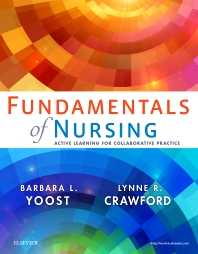
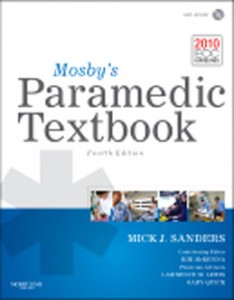
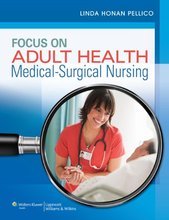
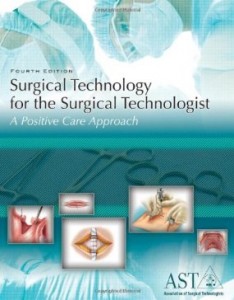
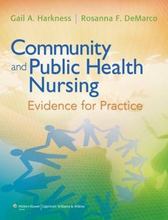

Reviews
There are no reviews yet.